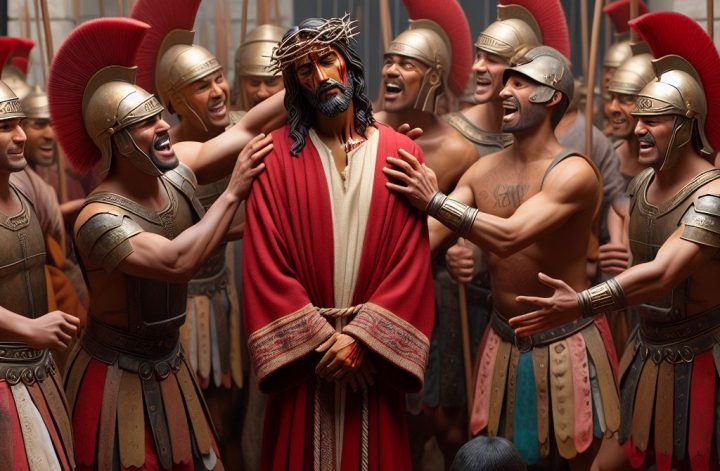I want to share some personal beliefs I have held for several years, but before I do, I feel it’s important to offer some gentle disclaimers. I recognize that my perspective is limited, and I genuinely welcome any feedback or corrections from readers. While I may present some generalizations, I fully understand that there are exceptions and nuances to consider. My intention is not to offend anyone; my insights stem from years of observation and a sincere desire for change in light of the status quo. So, let’s begin this conversation.
I have no doubts that there was a season when many of our current church practices were effective. Indeed, I think some of them will still be effective in other contexts. By and large, however, I do not think that they are quite effective today. Consider the ubiquitous churching structure where one person, usually a man, supposedly hears from God weekly and teaches the parishioners accordingly. (This structure seems so intimately connected with “church” that it is hard to think of a church without thinking about the structure.) I’m convinced this structure’s typical form has outlived its usefulness and should be reviewed. Some readers may wonder if this structure is sacrosanct. Hence, we should begin by considering the sacrosanctity question. In other words, on what authority does the one-Oga-at-the-top order of things rest, and what is its origin?
Examples in the early churches?
It may surprise you that the Bible gives no prescription for how to structure a church, but there are examples we can learn from. The clearest relevant churching example in the New Testament is the Jerusalem Church. What is quite clear about that Church, interestingly, is that it did not merely have one leader. Instead, it had many co-equal leaders governing its affairs, a critical point to remember. Besides, looking to Paul as the originator of this churching structure is also quite difficult to defend for many reasons. To begin with, while it is true that Paul often taught in churches for extended periods, he never taught a church for a lifetime (or until retirement). Moreover, Paul taught new believers for extended periods, a rather shrewd pedagogical move that would have ensured rapid grounding of fresh members. More relevantly, we have evidence that Paul generally had co-equal partners in his ministry. He started out with Barnabas and later had Silas. These men were not Paul’s protégés in any way. They were some of the original believers in Christ in Jerusalem, even before Paul became one.
Follow me as I follow Christ?
Sometimes in conversations, preachers bring up the references in Paul’s writings where he essentially tells Gentile Christians to imitate his examples. Here are some passages: 1 Corinthians 4:16, 11:1, Philippians 3:17, 1 Thessalonians 1:6, and 2 Thessalonians 3:7, 9. Generally, those who want to defend the one-man-show churching practice read these passages to mean that Paul became a present, proximal example to those Gentile Christians like Jesus, who was an example to those who believed in him during his earthly ministry. The obvious deduction is that today’s preachers can be the Christ-figure example for the parishioners to imitate. This reading of Paul is problematic, and the deduction is dangerous. In all the passages above, Paul does encourage Gentile Christians to imitate his practices and doctrines. Now, what can we say about the doctrinal habits?
Let us begin with the 1 Corinthians passages. The “imitate me” (4:16) instruction is immediately qualified by “my way of life in Christ Jesus, which agrees with what I teach everywhere in every church” (17). Similarly, 11:1 is sandwiched between detailed doctrinal explanations in chapters 10 and 11. So, the imitation is about adhering to sound doctrines traceable back to Jesus. The same applies to Philippians 3:17. In 1 Thessalonians 1, Paul praised the church for having been good imitators of his, his team, and Jesus to the extent that that church became a “model to all the believers in Macedonia” (7) because “the Lord’s message rang out” (8) from that church to believers everywhere in that vicinity. Once again, the imitation is intimately connected to the “Lord’s message.” Similarly, the 2 Thessalonians 3 passage addresses how one’s (correct) theology should influence one’s actions and way of living. Paul speaks of how he and his team members lived exemplary lives among the Thessalonians so as not to be a financial burden on the people, and he encouraged the people to imitate this example. So, we learn from these passages that Paul pointed to himself in ways that ultimately pointed to his master. He was not claiming to be better or unique; more importantly, he definitely did not set himself up as a proximal exemplary model in place of Jesus. In fact, he often used plural personal pronouns—we, us—in his writings to the churches, suggesting that whatever exemplar he thought himself to be was also applicable to other team members; he was as Christian as his team members in ministry.
Who directed the affairs of the church?
Interestingly, we see a pattern: whenever New Testament writers refer to the leadership of local churches, they use a plural term, “elders.” We see this a lot in Acts, but also in other books. For example, Acts 15:6, 11:30, 20:17, 21:18, 14:23, 15:22; Titus 1:5, and James 5:14. Now, we must be careful not to be guilty of anachronism. “Elders” likely did not mean an ageing Christian who sometimes taught in Sunday School classes. We have an illuminating passage in 1 Timothy 5:17, shedding some light on the roles of elders:
“The elders who direct the affairs of the church well are worthy of double honour, especially those whose work is preaching and teaching.”
A plurality of elders ran the churches, and some functioned much like today’s pastors and preachers do. As far as a local church was concerned, an elder was no less than an Apostle. In 1 Peter 5:1, Peter self-identified as a fellow elder. Now, the advantages of having a plurality of co-equal leaders running the affairs of a church ought to be obvious. There is safety in a plurality of advisers and leaders.
Where did it come from?
If we consider that the current structure of our church may not have originated directly from Jesus or the Apostles, it’s worth exploring its possible origins. Inspiration for our typical church structure may come from the Hebrew Bible, particularly during Israel’s theocracy. Just as Moses served as an intermediary between God and the Israelites, pastors often assume a similar role between Jesus and their congregations. They are tasked with nurturing the congregation and providing them with spiritual sustenance.
Many pastors say, “I have been seeking the Lord to understand what He wants me to preach and teach during this season.” This suggests a belief that pastors may have a unique closeness to God compared to the broader congregation. For example, during a typical New Year or Watchnight Service in many charismatic churches, it is common for pastors to share directives they’ve received from God for the upcoming year. This practice can evoke imagery from the Old Testament, particularly highlighting Moses’s distinction as a leader and mediator, which may create a perception of a privileged status among church leaders.
It is important to acknowledge that while the content presented may hold some truth, it is accompanied by several challenges. As previously noted, that era in Israel was characterized by a theocratic system where God served as the political leader, necessitating regular communication with the people through Moses, who acted as His spokesperson in governance matters. Moreover, attempting to mirror the governmental structure of ancient Israel in today’s church dynamics may present certain complications upon closer examination.
For instance, when God communicated with the leadership or manifested His presence among the people, He did so in readily apparent and verifiable ways. During the significant moments, such as when God spoke to Moses on Mount Sinai, it was evident to everyone present that a divine encounter was taking place, as indicated in Exodus 19:9. God’s presence was often communicated through tangible signs, such as the cloud of fire and smoke, ensuring that the entire community was aware of His engagement. These manifestations distinguished Moses as a chosen leader, not to suggest any inherent superiority over others, but to fulfill a specific role in guiding the people. It is crucial to remember that within the Church today, no individual should regard themselves as more uniquely divinely appointed than those around them. Doing so risks undermining the significant achievements of the Reformers, who advocated for the principle of the priesthood of all believers and could inadvertently lead to a hierarchical structure.
The Structure Hinders Nation-Building
Having argued that the churching structure lacks any normative power, it ought to be at least evident that believers need not defend it as if it were a pure directive from heaven. Yes, we are used to associating church with the familiar one-man-show order, but this probably is just nothing more than a mere tradition, and tradition, someone says, is often simply undue pressure from dead people. I shall now describe some more practical issues with the churching structure that hinder nation-building.
1. Preachers generally produce clones of themselves in ministry
One of the most unfortunate observations about the structure is that it is susceptible to becoming a controlling tool. No, I am not here addressing cases of deliberate control; instead, I am saying that it is very difficult for the structure not to become a tool for control, especially in Nigeria and much of Africa.
Our traditional ways of life already apportion arguably too much weight to authority. “Authority” for us is usually positional or seniority in age. We highly respect human authority, and the gods deserve much more respect. This cultural background largely influences the preacher-parishioner relationship, even before theological considerations. So, the largely unchallenged assertion that preachers receive what they teach directly from God encourages the parishioners to want to become like their preachers – the Jheri curl, (white) suits, and KJV English all included. Suppose God uniquely speaks to a preacher weekly without doing so to other church members. In that case, this would viscerally, at least, suggest that there is something inherently special about the preacher (and his position) —something that may be imitated in the hope that one would someday also become a confidant of God. A similar reasoning posits that the preacher’s words, at least, in the context of preaching, are inerrant; preachers cannot be wrong on matters that God reveals to them, can they? This partly informs why many Nigerian Christians see their pastors as the final authority on practically all matters. It also may inform the nauseating practice of assistant pastors and other church leaders, on the rare occasions that they give the sermon or during other speaking capacities, to try very hard to come across like their lead pastors.
Of course, we know it is doubtful that God speaks to preachers weekly about every word in their sermons. In any case, we know that the words of a preacher are not necessarily infallible or inerrant. We know this partly because preachers generally change some of their doctrinal views over time, sometimes in a volte-face fashion. For example, the veteran preacher, W.F. Kumuyi, now thinks diametrically differently than he did in his youth about some doctrinal matters. Similarly, the recent tithing issue forced many preachers to speak unequivocally on the subject, and many of them embraced a softer position than they had previously taught. In these cases, are we to say that God changed his mind on these matters, instructing preachers differently later in their lives than he did earlier? No, it is easier to posit that preachers had improved understanding.
The impact of our church structures can be significant, particularly in how they may lead many parishioners to adopt viewpoints that closely mirror those of their pastors. This often results in a lack of diversity in thought among church members regarding various aspects of life, including politics, parenting styles, theology, and socioeconomic perspectives. Many individuals, believing it to be their divine duty, feel compelled to align themselves closely with their pastors’ beliefs. This phenomenon can create a sense of uniformity that will hinder the diversity of thought needed to develop a nation.
This situation presents particular challenges in developing nations. For instance, considering the largest Christian denomination in Nigeria, we estimate a membership of around 15 million, amidst a total population of 200 million. This tendency towards uniformity could impact the nation’s human resources by around 7.5%. Furthermore, with approximately 40% of Nigerians identifying with a church, if a significant portion of these individuals attend churches promoting a similar approach, we could look at approximately 80 million people whose individuality might be streamlined to align with just a few doctrines. This raises concerns about the potential reduction of unique perspectives to a much smaller number of ideologically similar groups within our society. Lagbaja’s characterization of us as 200 million “mumu” may not reflect the whole picture; instead, we might be more accurately described as a few thousand individuals with distinguishable ideologies.
2. The churching structure and practice are generally unhealthy for the family of preachers.
The family members of preachers often receive the unhealthy effects of our churching practices. Since they often must keep up with being the Moses of their time, preachers often do everything necessary in their local assemblies at their family’s expense. It is, in fact, very common among preachers to hierarchize things in the following order: God > ministry > family > the rest. Little wonder why many preachers’ kids turn out in opposition; preachers often leave their children in the wild while running after other people’s kids.
Furthermore, the number of services and programs that churches have in a year takes its toll on the family. The typical church has two services weekly, where the pastor, Moses of the congregation, must preach and teach. Those two services typically require about a day each for preparation and “seeking the Lord.” Since preachers have the same 24-hour days as the rest of us, that is about 4 days a week. The family divides the remaining time, assuming the preacher can relatively easily turn off his “church mode.” Of course, the example we have been discussing is quite conservative. Some churches have multiple services per week. I knew about a preacher in Atlanta who reportedly holds five services every Sunday. Why would a person do that unless they really believe they are special, somewhat better than everyone else? Are we to think this preacher has no competent persons on his team to help with the load? Consider Jesus. He trained twelve guys and released them to preach and teach within a year or two of training. Furthermore, after less than four years of training, he committed the program entirely into those students’ hands. Why aren’t we following his example?
3. The structure Inadvertently Encourages Preachers to Build Empires
I am not here addressing cases of deliberate profiteering. I argued earlier that the one Oga-at-the-top order of churching is most likely modelled after some epochs of ancient Israel. An extra layer of evidence for this is seen in other things like the doctrines of the first-fruit offering and tithes. Of course, neither of these doctrines is taught in the New Testament church. And in the Old Testament, where they are taught, the circumstances were substantially different. One of the tribes of Israel literally depended on the offerings of the other tribes for survival because that tribe was set apart by God for ministry in that particular way. Here is a critical point: God designed this arrangement in the Old Testament. But he has not done the same for the church.
There is a related issue of succession in ministry. Today, it is essentially taken for granted that a preacher’s successor will be one of his children. But where in the world did we get the idea? It did not derive from Jesus or the apostles. How, then, did they get the idea? It seems to have been lifted from another aspect of ancient Israel’s theocracy. Specifically, God promised David that his kingship would be permanent. And it is not very difficult to see how the church might have arrived here. Preachers typically spend all of their adult lives building their ministries. That means doing all the hard work, which often requires family sacrifices. So, after some 30 years of hard work and building a sizeable ministry, why would they let someone else’s kid eat the fruit of their labour?
In light of these concerns, it is time for African Christians to prayerfully reconsider the churching models we have come to normalize. If the Church is Christ’s body, then no single part should dominate the whole since Christ is always the head. We must begin to explore and embrace models that encourage the plurality of constructive thought and celebrate the diverse gifts of every member. A church where only one voice matters is not only unscriptural but unhealthy for individuals and society. Our congregations should be spaces where members can think, question, and contribute meaningfully without fear of deviating from a single man’s vision. Through such plurality, not personality cults, the Church will be better positioned to nurture mature believers and contribute meaningfully to the development of our communities and nations.




